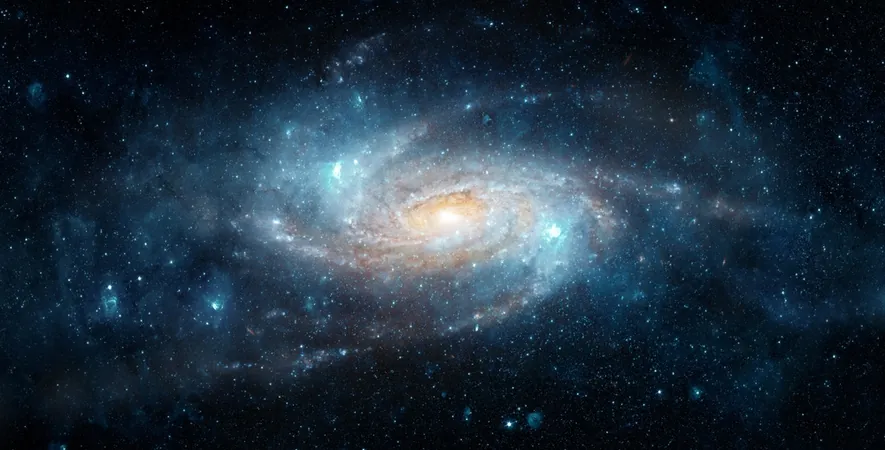
Groundbreaking Infrared Map of the Milky Way Revealed: 1.5 Billion Celestial Objects Discovered!
2024-09-27
Author: Arjun
Groundbreaking Infrared Map of the Milky Way Revealed: 1.5 Billion Celestial Objects Discovered!
In an extraordinary leap for astronomical research, astronomers have unveiled an unprecedented infrared map of the Milky Way that catalogs over 1.5 billion celestial objects—the most intricate map crafted to date.
This monumental effort utilized the European Southern Observatory's (ESO) VISTA telescope, observing the galaxy's central regions for over 13 years. The project amassed a staggering 500 terabytes of data, marking it as the largest observational initiative conducted by ESO.
Dante Minniti, an astrophysicist at Universidad Andrés Bello in Chile and the project leader, stated, "We made so many discoveries that we have changed the view of our galaxy forever." This new map remarkably covers an area of the sky equivalent to 8,600 full moons and reveals about ten times more objects than a previous version compiled in 2012.
The infrared technology employed enables researchers to identify newly formed stars often cloaked in dust, as well as ancient globular clusters—dense groupings of the Milky Way’s oldest stars. By focusing on infrared light, the VISTA telescope is capable of detecting naturally cold celestial bodies, such as brown dwarfs and free-floating planets that orbit no star.
The systematic observations began in 2010 and concluded in early 2023, accumulating data across a remarkable 420 nights. By repeatedly surveying specific sky segments, scientists tracked object movements and luminosity variations, uncovering stars whose brightness fluctuates with reliable regularity; these stars can serve as cosmic beacons for measuring interstellar distances. Consequently, this has provided an unprecedented 3D perspective of the previously obscured inner Milky Way, dominated by dust clouds.
Notably, researchers also identified hypervelocity stars—those that have been propelled from the Milky Way's core following close encounters with the supermassive black hole at its center.
This meticulous mapping is part of the VISTA Variables in the Vía Láctea (VVV) survey and its extension, the VVV eXtended (VVVX) survey. Roberto Saito, an astrophysicist at the Universidade Federal de Santa Catarina in Brazil and the study's lead author, remarked on the monumental scale of the project, acknowledging the strength of the collaborative team behind it.
The VVV and VVVX surveys have already spawned over 300 scientific publications, and with the completion of the surveys, the wealth of data will fuel scientific exploration for decades to come. Excitingly, ESO’s Paranal Observatory is set for enhancements, as VISTA is slated to be upgraded with the new 4MOST instrument, while the Very Large Telescope (VLT) will incorporate the MOONS instrument.
The synergy of these advancements promises to deliver spectral data for millions of Milky Way objects surveyed, paving the way for a future teeming with discoveries that could further revolutionize our understanding of the galaxy we call home! Are you ready to witness the cosmic revelations that await? Stay tuned!



 Brasil (PT)
Brasil (PT)
 Canada (EN)
Canada (EN)
 Chile (ES)
Chile (ES)
 Česko (CS)
Česko (CS)
 대한민국 (KO)
대한민국 (KO)
 España (ES)
España (ES)
 France (FR)
France (FR)
 Hong Kong (EN)
Hong Kong (EN)
 Italia (IT)
Italia (IT)
 日本 (JA)
日本 (JA)
 Magyarország (HU)
Magyarország (HU)
 Norge (NO)
Norge (NO)
 Polska (PL)
Polska (PL)
 Schweiz (DE)
Schweiz (DE)
 Singapore (EN)
Singapore (EN)
 Sverige (SV)
Sverige (SV)
 Suomi (FI)
Suomi (FI)
 Türkiye (TR)
Türkiye (TR)
 الإمارات العربية المتحدة (AR)
الإمارات العربية المتحدة (AR)